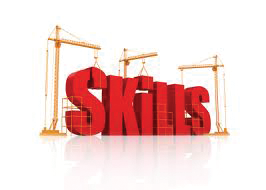Small Business
How Much Does the Skills Gap Cost Businesses?
It's one of today's most vexing economic puzzles: Why can't employers find workers to fill their positions when approximately 7.5 million1 Americans are unemployed, and millions more are working part-time because they can't find full-time positions or ...
May. 01, 2017

It’s one of today’s most vexing economic puzzles: Why can’t employers find workers to fill their positions when approximately 7.5 million Americans are unemployed, and millions more are working part-time because they can’t find full-time positions or have given up looking for work altogether? According to a new CareerBuilder survey, nearly 60 percent of U.S. employers have job openings that stay vacant for 12 weeks or longer. The average cost HR managers say they incur for having extended job vacancies is more than $800,000 annually.
CareerBuilder’s latest studies on the effects of the skills gap on the U.S. labor market were conducted online by Harris Poll from November 16 to December 6, 2016 and February 16 to March 9, 2017. These studies included representative samples of 2,391 and 2,380 employers, respectively, and 3,411 and 3,215 workers, respectively, across all industries in the private sector.
According to the survey, 68 percent of employers who said they were increasing their number of full-time, permanent employees in the first quarter (Jan.1-March 31, 2017) currently have open positions for which they cannot find qualified candidates. This is consistent across company sizes with larger companies – which tend to have more job openings in general:
- 1-50 employees: 49 percent
- 51-250 employees: 74 percent
- 251-500 employees: 72 percent
- 501+ employees: 71 percent
“The gap between the number of jobs posted each month and the number of people hired is growing larger as employers struggle to find candidates to fill positions at all levels within their organizations,” said Matt Ferguson, CEO of CareerBuilder and co-author of The Talent Equation. “There’s a significant supply and demand imbalance in the marketplace, and it’s becoming nearly a million-dollar problem for companies.”
The skills gap exists across industries
The supply/demand issue isn’t unique to one industry or certain occupational categories. The analysis below compares the number of job listings for positions to the number of hires using CareerBuilder and Emsi’s extensive labor market database, which pulls from a variety of national and state employment resources as well as online job postings.
|
Occupation |
2016 Average Monthly Hires |
Avg. Unique Job Postings (Jan 2016 – Dec 2016) |
|
Internists, General |
1,588 |
49,466 |
|
Heavy and Tractor-Trailer Truck Drivers |
106,780 |
1,495,132 |
|
Marketing Managers |
8,628 |
80,498 |
|
Information Security Analysts |
3,929 |
32,103 |
|
Web Developers |
6,955 |
46,950 |
|
Industrial Engineers |
8,156 |
48,749 |
|
Demonstrators and Product Promoters |
6,375 |
31,221 |
|
Sales Managers |
17,745 |
65,161 |
|
Human Resources Managers |
6,183 |
22,040 |
|
Financial Managers |
23,180 |
53,775 |
Employers acknowledge there’s a problem to fix
Two in 3 employers (67 percent) from the CareerBuilder survey say they are concerned about the growing skills gap, and with good reason. More than half (55 percent) say they have seen a negative impact on their business due to extended job vacancies with a sizable proportion of these employers pointing to productivity issues, an increase in voluntary turnover and revenue loss:
- Productivity loss: 45 percent
- Higher employee turnover: 40 percent
- Lower morale: 39 percent
- Lower quality work: 37 percent
- Inability to grow business: 29 percent
- Revenue loss: 26 percent
Workers say they are lagging behind
Those doing the hiring are not the only ones noticing the issue. 1 in 5 workers (20 percent) say their professional skills are not up to date. Fifty-seven percent of workers reported that they want to learn a new skillset to land a better-paying, more fulfilling job, but half of them said they can’t afford to do so.
To help with this, last year Capella Learning Solutions and CareerBuilder launched an initiative called RightSkill, which enables workers to upskill and reskill for in-demand jobs within 60 days or less. The program, which is currently free for candidates, teaches competencies online based on real-time data and guidance from employers. See more at www.rightskill.com.
These surveys were conducted online within the U.S. by Harris Poll on behalf of CareerBuilder between November 16 and December 6, 2016 (among 2,391 hiring and human resource managers and 3,411 workers who are employed full-time, not self-employed, and non-government) and February 16 and March 9, 2017 (among 2,380 hiring and human resource managers and 3,215 workers who are employed full-time, not self-employed, and non-government). Percentages for some questions are based on a subset, based on their responses to certain questions. With pure probability samples of 2,391, 3,411, 2,380, and 3,215, one could say with a 95 percent probability that the overall results have sampling errors of +/- 2.00, +/-1.68, +/-2.01, and +/-1.73 percentage points, respectively. Sampling error for data from sub-samples is higher and varies.
